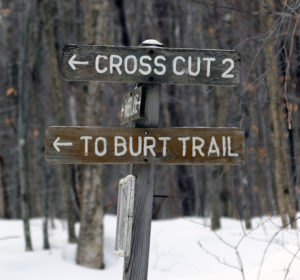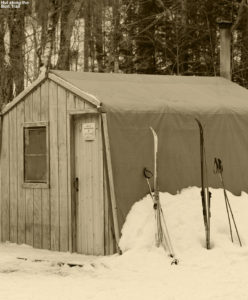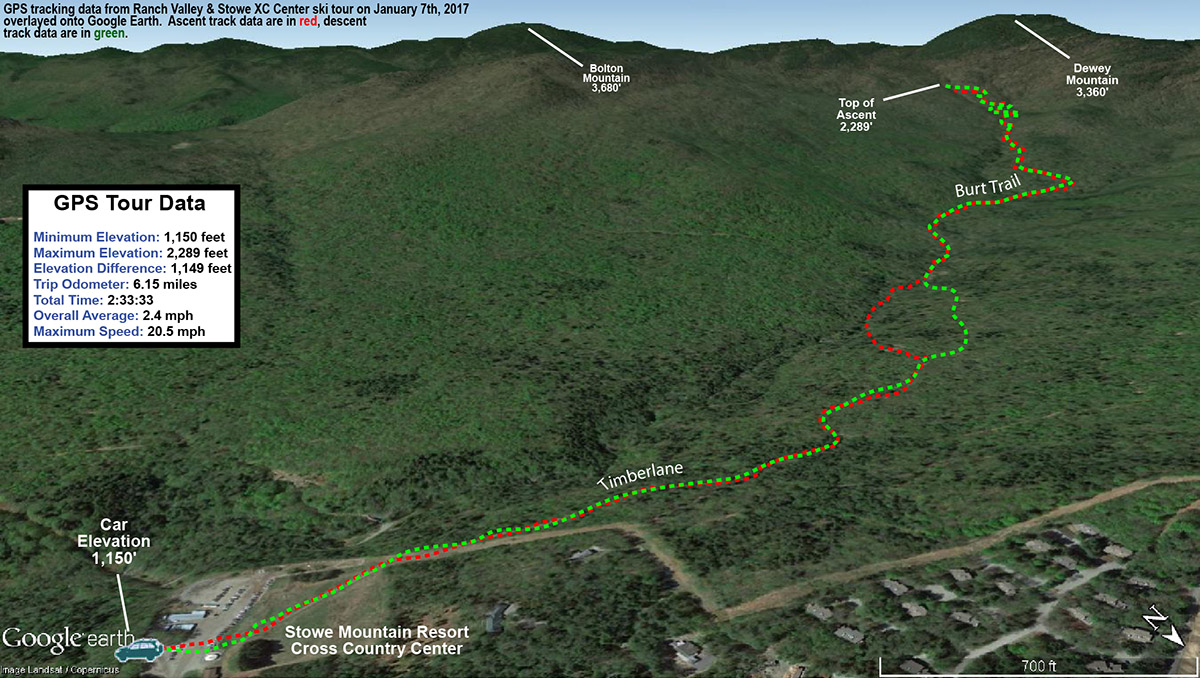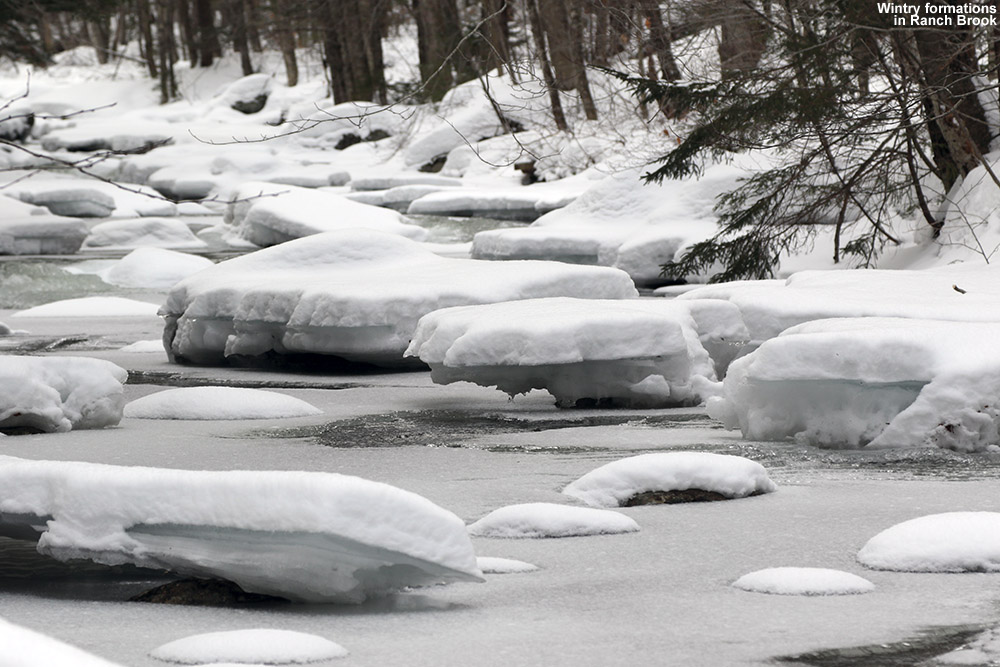
It’s been a relatively slow week for snowfall in the Northern Greens, but Stowe did manage to pick up roughly a foot of snow between Wednesday and Thursday. Since the Mt. Mansfield area seemed to be a sweet spot with respect to snowfall, I decided to head out for a backcountry tour in the Ranch Valley, which sits just to the south of the resort’s alpine trail network and is the location for Stowe’s Cross Country Center. I’ve been through the area numerous times when coming down the Bruce Trail, and I’ve sampled some of the natural glades that populate the middle elevations in that area. I could see that there was much more skiable terrain to explore though, so I decided to check out what the areas around the Burt Trail had to offer.
Temperatures were in the low to mid 20s F in the local mountain valleys as I headed up to the Stowe Cross Country Center to start my tour. It turns out that Mrs. Blanck was behind the counter when I was buying my trail pass, so we were able to catch up a bit and she gave me an overview of some nice glades that she’d heard of as we reviewed the backcountry portion of the trail map.
My ascent route consisted of starting on the Timberlane Trail and using Cross Cut 2 to get to the Burt Trail. The recent snows were certainly elevation dependent, so there was only about an inch of fresh snow atop the snowpack down near the base of the Cross Country Center at ~1,000’. It did increase as I ascended, reaching a couple of inches by the time I hit the Burt Trail, and nearly 4 inches at the top of my ascent at the junction with the Underhill Trail. Here’s the general depths of surface powder I found on my tour with respect to elevation:
1,000’: 1”
1,500’: 2-3”
2,000’: 3”
2,500’: ~4”

The backcountry portion of the Burt Trail starts right around 1,500’ elevation, and getting to that point represents a pretty hefty approach of over two miles, so that’s about the minimum distance one will have to go on this route to get into terrain for potential descents. The Burt Trail really starts to steepen above 2,000’, which one hits at close to three miles in. At that point it’s comprised of switchbacks to accommodate the steeper terrain. That area is still mostly hardwoods, with scattered evergreens, so tree density isn’t too bad and one can easily cut the switchbacks and ski through the forest. That terrain is pretty steep though, so one would want a decent amount of powder for it to be optimal. Based on darkness and trying to ensure that I made it back to the Cross Country Center by 5:00 P.M. since a sign that the parking lot gate would close at that point, I only ascended to the junction with the Underhill Trail, but I could see that there was plenty of similar terrain right up above me.
As for the skiing and conditions, one would definitely want more powder above the base than what I found today, but I was still able to get in some decent turns. I had my midfat Tele skis, which were certainly not all that light in the overall spectrum of Nordic equipment, but I was thankful to have something that could handle the descent well. I cut the Burt Trail switchbacks and skied the fairly open forest in some spots, but I could actually stay on the trail itself for the most part where it mattered. Only one person had gone up ahead of me above 2,000’ on the trail and they must have descended another way, because there was no descent track. So the Burt Trail itself was relatively untracked and I got some of my best turns of the afternoon simply by staying on it. The terrain in the 1,500’ to 2,000’ range offers some options off the trail depending on the pitch of the terrain, but I just ran my descent out the trail itself based on the snow conditions and my time. The whole runout back to the Cross Country Center is actually pretty fun, and you can really cruise along at times, but you will have to do some skating and deal with a couple of small uphill sections. It’s quite similar to running out the Bruce Trail though, and indeed the route is identical in some spots, so if you’ve done that you’ll have a good sense for what this is like.

It looks like we’ll be in a fairly active weather pattern in the foreseeable future with some clipper-type events and larger synoptic systems with potential mixed precipitation, so we’ll see how these play out in terms of bolstering the snowpack.








